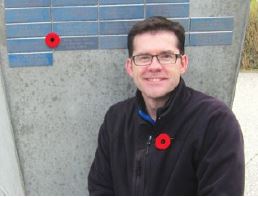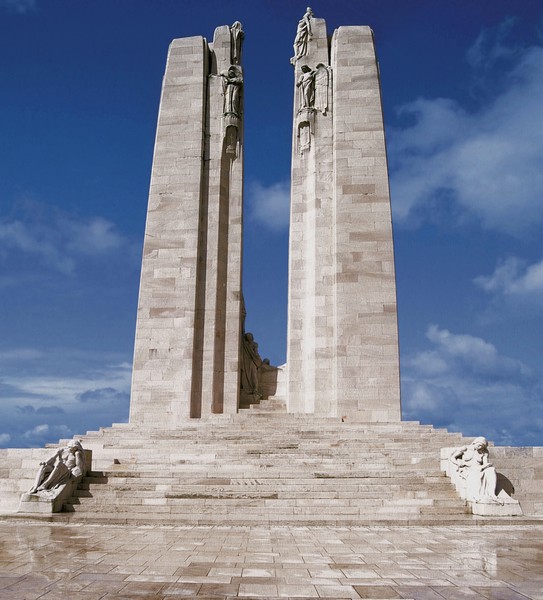 Meet Ron Labrie, a history teacher in Ponoka, Alberta. With years of experience leading commemorative tours with Explorica, Ron has gained some fascinating insight and stories to share about Canadian history, Vimy Ridge, and the impact of bringing students around the world to witness history firsthand.
Meet Ron Labrie, a history teacher in Ponoka, Alberta. With years of experience leading commemorative tours with Explorica, Ron has gained some fascinating insight and stories to share about Canadian history, Vimy Ridge, and the impact of bringing students around the world to witness history firsthand.
What are your school’s connections to WWI?
Ponoka Composite High School was the Alberta representative at the 90th Anniversary of Vimy Ridge Ceremony in Ottawa in 2007, where we were happy to lead the Pledge of Remembrance on behalf of the youth of Canada. Our community has four soldiers memorialized on the Vimy Ridge monument and one soldier buried at Canadian Cemetery No. 2. Since 2009, we have had 175 students visit the Vimy Memorial, Menin Gate, St. Julien, Passchendaele, Hill 62 and 21 other Commonwealth War Graves Cemeteries.
Which WWI site is most important for Canadian students to see?
There are many, but without question, the Vimy National Memorial has a spirit about it that can only be realized by a visit. The monument itself is an incredible piece of art and exemplifies the “Canadian way”—with no mention of victory, domination, or revenge, it is a monument about sacrifice and remembrance.
 Why is it important to visit Vimy Ridge in 2017?
Why is it important to visit Vimy Ridge in 2017?
As most historians suggest, the Battle of Vimy Ridge was the first time all four Canadian divisions fought side-by-side in the Great War. We began to recognize ourselves less as British subjects, and more as self-determined Canadians. To honour the Canadian soldiers who fought at Vimy Ridge, the French government ceded 100 hectares of land to Canada in perpetuity, where the monument now stands. In the centenary year, it is important to visit this iconic WWI memorial and remember the horror and sacrifice of war. As an educator, I value the opportunity to show my students Vimy Ridge: my favourite part of Canada.
Why should teachers lead educational tours?
Despite the efforts of the best textbooks, it is impossible to replicate the experience a student gains from visiting places that helped shape our world. Educational tours invite stronger relationship-building opportunities with students, and give them political, social and cultural experiences that cannot be measured by pencil, pen, nor electronic device.
What is the most memorable experience from your past tours?
We were fortunate to meet a former member of the French Resistance, Adrien Jobin (93), who at the age of 19 hid the surviving crew members of the Lancaster bomber that was shot down. His village has created a beautiful Canadian monument in honour of the two RCAF crew members that perished, one of whom was from Ponoka. We were deeply connected to the emotional presentation given by Monsieur Jobin, his brother, and his wife. They were overwhelmed with gratitude for our visit and our passionate biography of our Ponoka soldier. We have since had regular correspondence with Jobin and his community to enhance the legacy of Pilot Officer George Cameron.
After going on an educational tour, how do students react?
My students have a newfound appreciation for sacrifice and remembrance from the soldier profiles they research and the hours of preparation before departure. Many of my alumni frequently talk about the impact the journey had on them, and more specifically, how Remembrance Day has had a profound significance in their life.
Experience a tour with Ron! We recently joined on one of his incredible Canadian history tours so you can see first-hand how deeply the students respond to the experience.
